6 Spots for Local Delicacies in Kumamoto’s Culinary Kaleidoscope
Explore Kumamoto's unique flavors with our top 6 picks for local cuisine, from savory Taipien to delectable Akaushi beef and more!
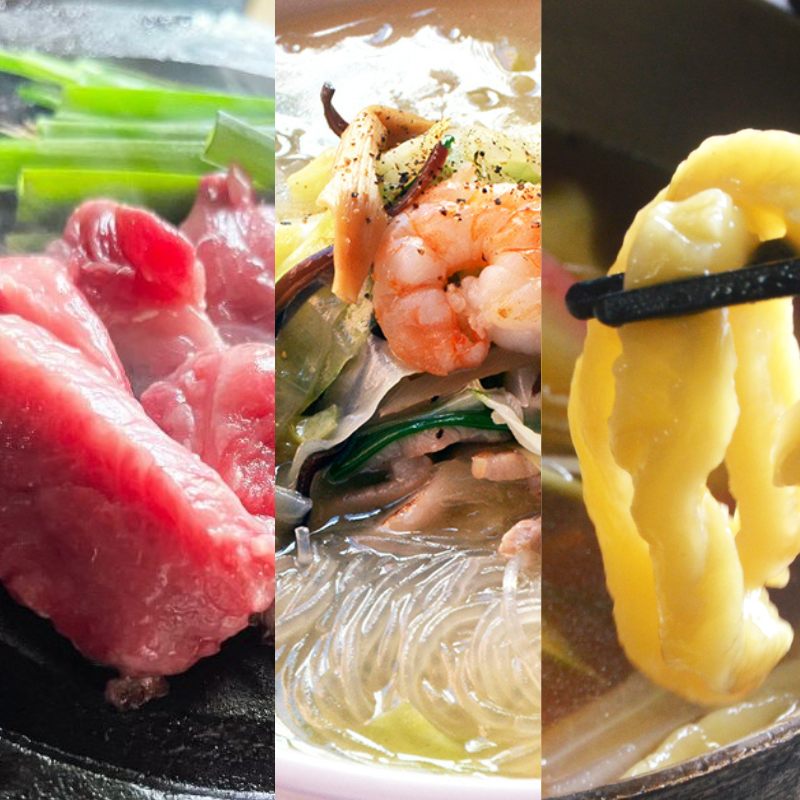
Hey there, food adventurers! 🐝🎵
Tabeena here again to guide you through all things fun in Kumamoto, the heart of Kyushu, where mountains meet the sea and deliciousness is never far away!
This time, I’m thrilled to share my top 6 picks for savoring Kumamoto’s signature dishes right in the city. Get ready to tantalize your taste buds!
We’re talking Taipien, Akaushi beef, Amakusa sushi, Kumamoto ramen, Dago-jiru, Basashi, and Karashi Renkon…
I’ll also spill the beans on each restaurant’s unique charm and my own 🐝-loved recommendations!
So dive in and enjoy the culinary wonders of Kumamoto to the fullest! 🌟🌟
1. Taipien – The Fujianese dish that became a Kumamoto staple
Ever heard of Taipien (太平燕)? This scrumptious dish features a rich broth made from chicken and pork bones, filled with glass noodles, and topped with stir-fried shrimp, squid, veggies, uniquely, a deep-fried boiled egg (sometimes called a “Tiger Skin Egg” from the Chinese “hu pidan” – 虎皮蛋).

Taipien’s journey to Japan is a fascinating tale, originating from the Chinese province of Fujian at least 120 years ago. It was once a common dish across Kyushu, but has now become a special treat found almost exclusively in Kumamoto.
Even for a local like me, who grew up enjoying Taipien in school lunches and local Chinese eateries, it’s a comforting taste of home. Many of us in Kumamoto grew up believing Taipien was thing all across Japan, only to discover it’s a rare find outside our prefecture when we leave.
For the best Taipien in town, I recommend Korantei, located in the bustling Shimotori Shopping Arcade in Kumamoto’s city centre. It’s a must-visit for anyone craving an authentic taste of this local specialty! 🍜

Since its inception in 1934, Korantei in the Shimotori Arcade has been a beacon of Chinese cuisine in Kumamoto, passionately preserving the timeless flavor of Taipien.
The allure of Korantei’s Taipien lies in its gentle, chicken and pork bone-based broth. The natural salt, sourced directly from Fujian Province, is the secret touch that adds depth to its simple yet profound taste.
A key element is the springy glass noodles, which are actually made 100% from the starch of green beans, each strand becoming infused with the rich flavors of the broth.
The dish is generously loaded with locally sourced vegetables and wood ear mushrooms, making it not only wholesome but also satisfyingly filling.
For a genuine taste of Taipien that stays true to its roots, Korantei is the place to go. It’s a unique experience that can’t be replicated elsewhere.


Korantei Shimotori Location (紅蘭亭下通店)
Address: 5-26 Anseicho, Chuo Ward, Kumamoto City (熊本市中央区安政町5-26) [Google Maps]
Phone: 096-352-7177
Operating Hours: 11:00 AM – 9:00 PM (Last Order at 8:00 PM)
Days Closed: Irregular
Seating Capacity: 90 seats
Parking: Nearby paid parking available
Access: About 3 minutes walk from the Kumamoto City Tram “Torichosuji” (通町筋) stop
Additional Information: Reservations for lunch are only for course meals
Official Website: https://www.kourantei.com/
2. Akaushi (あか牛) “Red Beef” – The Gift of the Aso Grasslands
Akaushi refers to a type of Wagyu (Japanese beef), specifically a breed with red hair raised in the lush volcanic grasslands that surround Mount Aso in the north-east of Kumamoto Prefecture.

What sets Akaushi apart is the texture and taste: lean yet packed with umami, a kind of beef that’s both tender and healthy.
If you’re thinking red meat is tough, think again! While marbled wagyu has its charm, Kumamoto boasts a significant number of “Akaushi Lovers” who prefer its distinctive quality.
For an authentic Akaushi experience in Kumamoto City, head over to Yamami Chaya, located near Josaien (the shopping and souvenir district at the foot of Kumamoto Castle). This restaurant is a haven for Akaushi enthusiasts, offering a dining experience that highlights the true essence of this unique local beef. 🐂
Yamami Chaya

Nestled in the Aso caldera is the original Yamami Chaya in Takamori. Yet, for those exploring central Kumamoto City, there they have also opened another convenient location to enjoy authentic Akaushi cuisine located near the base of Kumamoto Castle in the Josaien area.
The meat is grilled to perfection on a lava stone plate made from the volcanic rocks of Mount Aso’s foothills, sealing in all the savory juices. Quickly seared fresh meat wrapped in accompanying garlic chives offers a burst of flavor in every bite.
The restaurant’s secret sauce, light yet irresistibly tasty, enhances the melt-in-your-mouth deliciousness of Akaushi and the rich umami of the horse meat.
The popular “Kumamoto Ajiwai Yogan-Yaki Zen” (literally meaning something like “The Essence of Kumamoto Volcanic Stone-Grilled Set Meal”) is an option that includes Akaushi and horse meat, along with Takamori’s famous freshly fried tofu and the local specialty Dago-jiru soup, allowing you to savor a variety of Kumamoto’s culinary highlights in one meal.
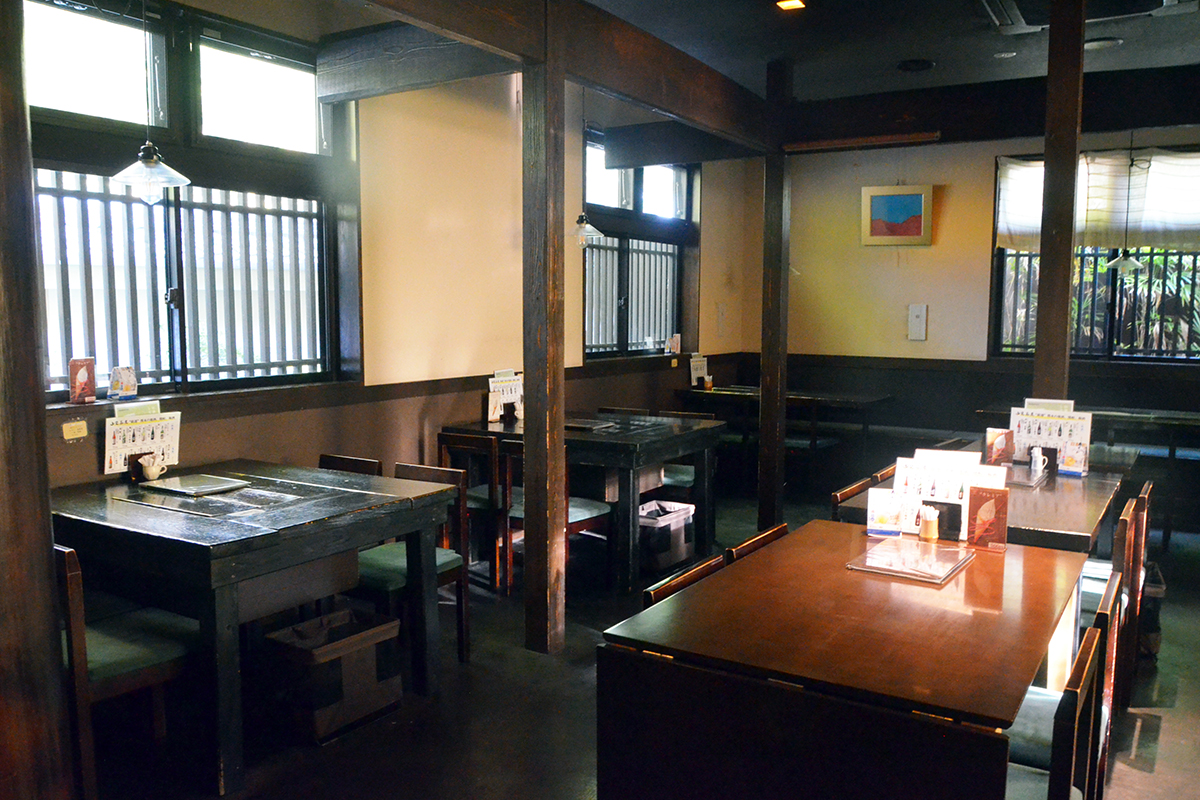
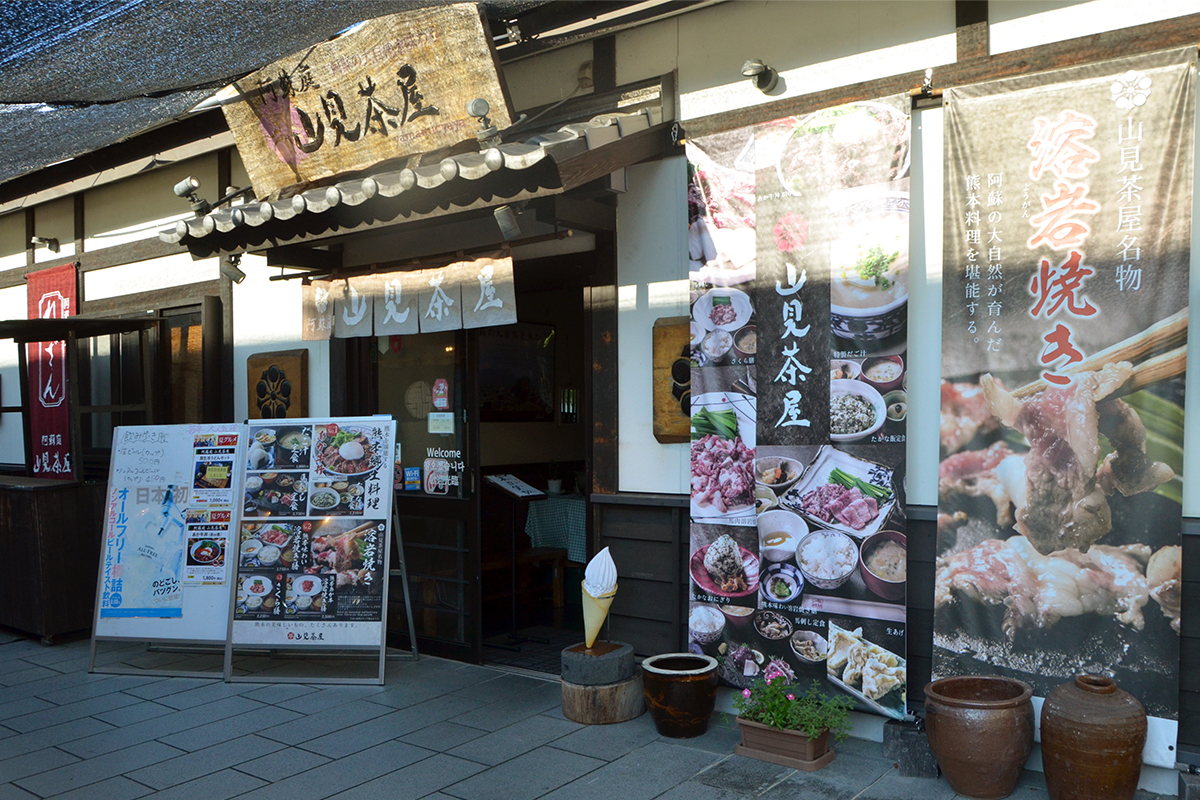
Aso-niwa Yamami Chaya, Kumamoto Josaien Location (阿蘇庭 山見茶屋 熊本城彩苑店)
Address: 1-1-2 Ninomaru, Chuo Ward, Kumamoto, Kumamoto Prefecture (熊本県熊本市中央区二の丸1-1-2) [Google Maps]
Phone: 096-327-9293
Business Hours: 11:00 AM to 6:00 PM (Last order at 5:30 PM)
Closed: Open daily
Seating Capacity: 46 seats
Parking: Available
Access: About a 6-minute walk from Hanabatacho tram stop on the Kumamoto City Tram
Official Website: https://yamami-cyaya.com/
3. Sushi – Yes, Sushi is Also a Kumamoto Speciality
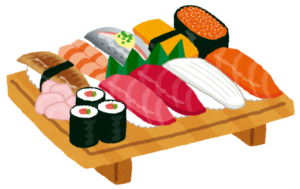
First of all, we can’t talk about sushi in Kumamoto without a small a geography lesson. What, who, or where exactly is “Amakusa”?
The Amakusa Islands, located in the southwestern part of Kumamoto, is a stunning archipelago consisting of over 120 islands. The islands are surrounded by three distinct bodies of water, Ariake Sea, the Yatsushiro (Shiranui) Sea, and the Amakusa Nada, each with their own distinctive characteristics. As a result, the Amakusa Islands are a haven for an astonishing variety of fish species – around 3,000 in fact!
The seasonal fish that can be found in Amakusa’s waters include…
- Spring: Kibinago (silver-strip round herring), madai (red sea bream) and isaki (threeline grunt)
- Summer: Aji (horse mackerel), madako (octopus) common octopus, and shiira (mahi-mahi)
- Autumn: Kawahagi (filefish), kamasu (barracuda), and saba (mackerel)
- Winter: Buri (Japanese amberjack or yellowtail), tachiuo (cutlassfish), and hirame (flounder)
Amakusa is renowned for its kuruma-ebi prawn farming, boasting one of the highest production levels in Japan and was also the birthplace of this prawn aquaculture in Japan.
While you can find specialty stores selling them Amakusa, fresh kuruma-ebi prawns and other local seafood are also readily available in various establishments within Kumamoto City as well.
Where to Eat Amakusa’s Seafood in Kumamoto City
For a taste of Amakusa’s seafood in Kumamoto city, head to Uo Yoshi, a time-honored sushi restaurant located in the central Chuo Ward, Kokufu-cho. This establishment, with over a century of history, is not only a testament to sushi-making tradition but also offers a unique culinary experience with its diverse range of fresh, local seafood.

Established in 1921, Uo Yoshi has been serving delicious sushi for over a century! This historic restaurant is now in the hands of its fourth-generation owner, who handpicks fresh, seasonal fish every morning from Kumamoto’s Tasaki Market (田崎市場 Tasaki Ichiba).
What’s unique about Uo Yoshi is not just its sushi crafted from the freshest catch but also its limited lunch offering of freshly made soba noodles. This specialty comes from a tradition passed down from a renowned soba restaurant, Oishi Soba (大石そば), once located within walking distance from Uo Yoshi. The current soba dishes at Uo Yoshi carry forward the legacy of Oishi Soba, including the culinary techniques and tools.
So, when visiting Uo Yoshi, you’re in for a treat – not only can you savor exquisite sushi, but you also have the rare opportunity to enjoy authentic, carefully crafted soba noodles, a tradition continued with pride and dedication.

At night, “Uo Yoshi” offers an omakase course or à la carte options, focusing on “seasonal”, “fresh”, and “local” ingredients. The chef, trained in a Kyoto-based Japanese restaurant, ensures that each dish is not only delicious but also visually stunning. The restaurant, with its simple and modern ambiance, is the perfect place to enjoy a meal in a relaxed and comfortable setting.

Uoyoshi (魚よし)
Address: 2-22 Gofukumachi, Chuo Ward, Kumamoto City, Kumamoto Prefecture (熊本県熊本市中央区呉服町2-22 [Google Maps]
Phone: 096-352-4062
Business Hours:
Lunch: 11:30 AM – 2:00 PM (Last Order 1:30 PM)
Dinner: 5:30 PM – 9:30 PM (Last Order 9:00 PM)
Closed: Wednesday
Seating Capacity: 30 seats
Parking: Available
Access: 1-minute walk from “Gofukumachi” (呉服町) tram stop on Kumamoto City Tram A Line
4. Kumamoto Ramen: Dedication to Perfection
It’s well known by this point that most regions of Japan have their local twist on ramen, now almost a global comfort food. Ever wondered about “Kumamoto Ramen”? Here’s the scoop!
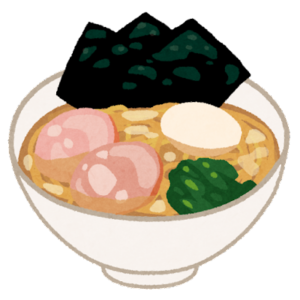
“Tonkotsu” or pork bone ramen, which originated in Kurume (central Fukuoka Prefecture), evolved and spread south to Kumamoto via Tamana. The general preparation involves simmering pork bones in natural water from Kumamoto for several hours to make the broth, served with medium-thick straight noodles. Toppings include char siu, bamboo shoots, wood ear mushrooms, fried garlic, and seaweed from the Ariake Sea. Adding pickled mustard greens enhances the synergy with the soup, making it irresistibly delicious.
Source: “Kumamoto Ramen” by Kumamoto City
Kumamoto ramen, flavored with aromatic fried garlic oil (known as ma-yu), is a delight for any ramen lover. It’s a unique take on the classic pork bone broth ramen, where the rich, garlicky flavor adds a whole new dimension to the dish.
As for me, the presence of Kumamoto and Aso’s specialty, pickled mustard greens (karashi takana), on the table always boosts my mood. It’s a perfect complement to the already flavorful ramen, elevating the entire experience.
If you’re in the heart of Kumamoto city and craving some authentic Kumamoto ramen, head over to “Kumamoto Ramen Sansuitei” located within the Kamitori Shopping Arcade in Kumamoto City. It’s a local favorite, renowned for its dedication to preserving the authentic flavors of this regional specialty.🍜

“Kumamoto Ramen Sansuitei” is a revered noodle shop in Kumamoto, known for its dedication to the flavors passed down by its Taiwanese founder (the current owner’s grandfather). This eatery has earned a reputation for being fast, affordable, and delicious.
One of the unique aspects of Sansuitei is their use of thin noodles, a rarity in Kumamoto ramen circles, which tend to be on the slightly thicker side. These noodles are homemade using domestically sourced wheat, and carefully crafted to achieve the perfect balance of firmness, texture, and smoothness.
Moreover, the broth and most of the seasonings are prepared in-house, simmered for 10 hours each day. The commitment to using high-quality, safe ingredients is evident, ensuring a bowl of ramen that’s not only satisfying but also safe enough to serve to their own children and grandchildren.
This attention to detail and quality has garnered Sansuitei a loyal following, with families spanning three generations frequenting the establishment.

Sansuitei (山水亭)
Address: 6-18 Kamitori-machi, Chuo-ku, Kumamoto City, Kumamoto Prefecture (熊本県熊本市中央区上通町6-18) [Google Maps]
Phone: 096-325-1800
Business Hours: [Weekdays] 11:00 AM to 3:00 PM, [Weekends and Holidays] 11:00 AM to 8:00 PM
Closed on Tuesdays
Seating Capacity: 40 seats
Parking: Nearby paid parking available
Access: A 5-minute walk from Suidocho tram stop on the Kumamoto City Tram
Website: https://daimonji-kumamoto.com
5. What Exactly is ‘Dago-jiru’?

Dago-jiru is a soup containing dumplings made from wheat flour (sometimes rice flour), which are hand-stretched and torn after resting the dough. Seasonal vegetables like taro and burdock are added, and it is typically flavored with miso or soy sauce. Easily prepared and nutritious with satisfying fullness, it has been a favored meal during farming activities for ages. ‘Dago’ is Kumamoto dialect for ‘dango‘ (dumplings), and the dish is also known “dango-jiru”. While it’s consumed throughout Kyushu, in Kumamoto, many areas use sweet potatoes in their dumplings. Variations include ‘Ikinari Dago-jiru’ from Kumamoto City, where whole pieces of sweet potatoes are wrapped in the dumplings, ‘Ohime-san Dango-jiru’ from the Kikuchi area, where sweet potato is blended into the dough for a sweet, smooth texture, and ‘An Mochi Dago-jiru’ from Koshi City, featuring sweet bean paste mixed with black sugar, wrapped in sweet potato dough. Some regions also make it like udon, stretching and cutting the dough into noodle-like strips. The ingredients and preparation vary by region and household, adding to its charm.”
Source: Ministry of Agriculture, Forestry, and Fisheries “Our Local Cuisine: Kumamoto Prefecture – Dago-jiru”
The seasoning (miso or soy sauce) of dago-jiru, its ingredients, and the shape of the ‘dago’ (dumplings) vary by region, household, and restaurant.
Keep this in mind when choosing a place to enjoy this dish! 🐝
If you’re in Kumamoto City and craving ‘dago-jiru’, “Toge no Chaya Koen Dago-jiru Ya” in the Nishi Ward of Kumamoto City a highly recommended spot! 🍜
Commitment to ‘Dago-jiru’ at Toge no Chaya Park Dago-jiru Ya

“Dago-jiru” 990 yen (tax included). Set meals including rice with millet or bamboo shoots are 1,210 yen
The Torigoe Pass on Mount Kinpo (located within the borders of Kumamoto City) is one of the settings in Natsume Soseki’s novel “Kusamakura.”
In 1989, the area was developed into ‘Toge no Chaya Park,’ featuring a museum dedicated to Natsume Soseki and the establishment of “Toge no Chaya Park Dago-jiru Ya.”
Here, the ‘Dago-jiru’ is prepared with a rich yet light soy sauce-based broth using Higo Red Chicken for the dashi.
The main feature, the ‘dago’ (dumplings), are unique, resembling thin, udon-like noodles. These handmade noodles are crafted from a blend of local Kumamoto wheat, ensuring the soup clings well to them.
The dish is also generously filled with locally sourced vegetables like Napa cabbage, burdock, and shiitake mushrooms, ensuring a hearty serving.
Served in an cast-iron pot, cooked to order, and portioned based on the number of guests, one of the joys of dining here is sharing the steaming hot dago-jiru among friends and family.


Touge no Chaya Koen Dagojiruya (峠の茶屋公園 だご汁や)
Address: 5-4, Takeshi, Kawauchi-machi, Nishi-ku, Kumamoto City, Kumamoto (熊本熊本市西区河内町岳5-4) [Google Maps]
Phone: 096-277-2154
Operating Hours: 11:00 AM to 5:00 PM (Last Order at 4:30 PM)
Closed on Tuesdays
Seating Capacity: 70 seats
Parking: Available
Access: 1-minute walk from the “Touge no Chaya Koen-mae” (峠の茶屋公園前) bus stop on the Kumamoto Sanko Bus route (via Shinmachi-Yoshino towards Kawachi in Japanese: 新町・芳野経由河内行き)
Social Media: Instagram
6. Traditional Kumamoto Cuisine – “Kyodo Ryori”
What is traditional Kumamoto Cuisine?

Located in the heart of Kyushu, Kumamoto is a region rich in nature. As one of Japan’s leading agricultural prefectures, Kumamoto boasts a wide array of delicious local dishes made from fresh vegetables, seafood, and livestock products like horse meat and ‘Akaushi’ (red cattle).
Key Traditional Dishes of Kumamoto:
- Horse Sashimi (Basashi)
- Deep-Fried Lotus Root Stuffed with Miso and Mustard (Karashi Renkon)
- Rice with Pickled Mustard Greens (Takana Meshi)
- Boiled Wild Scallion with Vinegared Miso (Hitomojii no Guruguru)
- Taipien
- Ikinari Dango (Sweet Potato Dumplings)
- Dago-jiru
- Nankan-Age (Deep-Fried Tofu) Wrapped Sushi, and more…
We’ve found a wonderful video that introduces Kumamoto’s local cuisine!
For those who long to savor the essence of a place they visit through its local cuisine, “Tabisai,””Tabisai,” a restaurant specializing in horse sashimi, Higo beef, and fresh seafood directly from Amakusa, is a perfect choice.
“Higo Manpuku Gozen” Set Meal at “Tabisai”: Basashi, Higo Beef, and Fresh Seafood from Amakusa

Since its opening in 1994, “Tabisai” has become a favorite among tourists and locals alike for its commitment to Kumamoto ingredients and a wide selection of sake from Kyushu. If you’re exploring Kumamoto, don’t miss out on their popular set meal “Higo Manpuku Gozen,” which lets you taste a variety of local specialties.
“Higo Manpuku Gozen” Details:
- A comprehensive set comprising of 7 dishes: two types of horse sashimi, four kinds of Amakusa seafood sashimi, karashi renkon, ichimonji no guruguru, horse croquette, Tabisai’s signature braised horse sinew, and braised pork with fried tofu.
- The set also includes rice, miso soup, salad, and more, all for 2,398 yen.
Ideal for solo diners or to be shared among family and friends. In addition, the menu at “Tabisai” features a variety of other Kumamoto specialties like yamauni tofu, charcoal-grilled Aso chicken, dago-jiru and Takana-meshi, perfect for additional orders.
A wide range of Kyushu local sake and shochu is also available to complement your meal. Plus, the restaurant is conveniently located inside a business hotel with a natural hot spring, making it a great choice for business travelers looking for a relaxing dining experience after a busy day.


Tabisai – Horse Sashimi, Higo Beef, and Fresh Amakusa Seafood Restaurant
(馬刺しと肥後牛 天草直送地魚の店 旅彩)
Address: 1-30-1 Uoyamachi, Chuo Ward, Kumamoto City, Kumamoto Prefecture, Super Hotel Lohas Kumamoto Natural Hot Spring 1F (熊本県熊本市中央区魚屋町1-30-1 スーパーホテルLohas熊本天然温泉1F) [Google Maps]
Phone: 096-351-8393
Business Hours:
Weekdays: 11:30 AM to 2:00 PM (Last Order at 1:50 PM)
Weekdays and Saturdays: 6:00 PM to 11:30 PM (Last Order at 11:00 PM)
Sundays and Holidays: 6:00 PM to 10:30 PM (Last Order at 10:00 PM)
No regular holidays
Seating Capacity: 62 seats
Parking: Available
Access: 1 minute walk from Kawaramachi (河原町) stop on the Kumamoto City Tram Line A
Official Website: https://japanese-izakaya-restaurant-30759.business.site
That wraps up our guide to the top 6 restaurants in Kumamoto City where you can enjoy Kumamoto’s famous gourmet delicacies! How was it? 🐝
We’ll keep buzzing around to bring you more exciting (and delicious!) highlights from Kumamoto, so you can enjoy the best of what this wonderful city has to offer.
We hope this article reaches both locals and tourists alike, spreading the joy of Kumamoto’s culinary treasures…💕
The above was translated and adapted from an article on our Japanese sister website ALT Kumamoto, titled “【熊本名物決定版】太平燕やあか牛、だご汁に熊本ラーメン! 熊本市内で熊本名物や郷土料理が味わえるおすすめの店6選” For the original content, visit https://akumamoto.jp/archives/220631.






























If you would like to comment, please do so below.